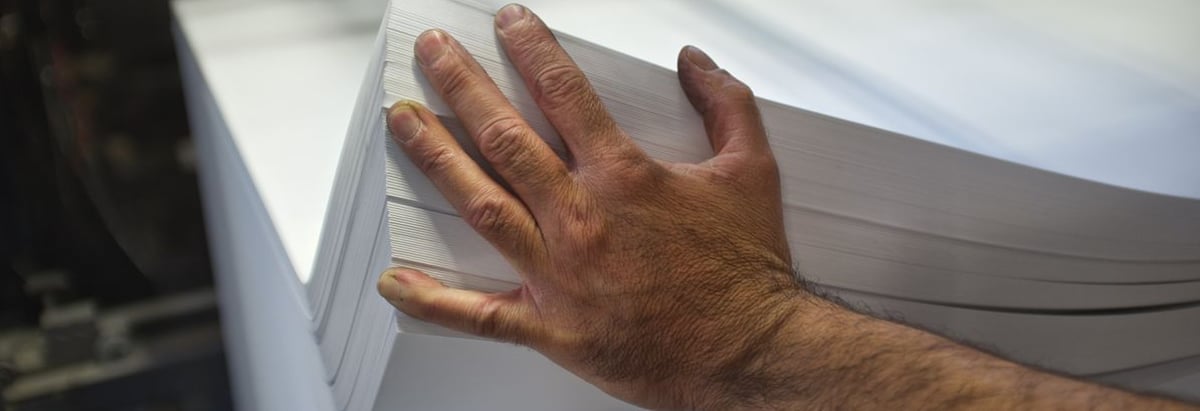- Spain
- /
- Paper and Forestry Products
- /
- BME:ENC
Does ENCE Energía y Celulosa (BME:ENC) Have A Healthy Balance Sheet?

Warren Buffett famously said, 'Volatility is far from synonymous with risk.' So it might be obvious that you need to consider debt, when you think about how risky any given stock is, because too much debt can sink a company. We note that ENCE Energía y Celulosa, S.A. (BME:ENC) does have debt on its balance sheet. But is this debt a concern to shareholders?
When Is Debt A Problem?
Debt and other liabilities become risky for a business when it cannot easily fulfill those obligations, either with free cash flow or by raising capital at an attractive price. If things get really bad, the lenders can take control of the business. However, a more usual (but still expensive) situation is where a company must dilute shareholders at a cheap share price simply to get debt under control. Of course, plenty of companies use debt to fund growth, without any negative consequences. When we examine debt levels, we first consider both cash and debt levels, together.
See our latest analysis for ENCE Energía y Celulosa
What Is ENCE Energía y Celulosa's Debt?
The image below, which you can click on for greater detail, shows that ENCE Energía y Celulosa had debt of €455.8m at the end of March 2023, a reduction from €496.3m over a year. However, because it has a cash reserve of €339.9m, its net debt is less, at about €115.9m.

A Look At ENCE Energía y Celulosa's Liabilities
According to the last reported balance sheet, ENCE Energía y Celulosa had liabilities of €470.4m due within 12 months, and liabilities of €525.0m due beyond 12 months. Offsetting this, it had €339.9m in cash and €135.5m in receivables that were due within 12 months. So it has liabilities totalling €520.0m more than its cash and near-term receivables, combined.
This deficit is considerable relative to its market capitalization of €703.0m, so it does suggest shareholders should keep an eye on ENCE Energía y Celulosa's use of debt. Should its lenders demand that it shore up the balance sheet, shareholders would likely face severe dilution.
In order to size up a company's debt relative to its earnings, we calculate its net debt divided by its earnings before interest, tax, depreciation, and amortization (EBITDA) and its earnings before interest and tax (EBIT) divided by its interest expense (its interest cover). Thus we consider debt relative to earnings both with and without depreciation and amortization expenses.
With net debt sitting at just 0.37 times EBITDA, ENCE Energía y Celulosa is arguably pretty conservatively geared. And it boasts interest cover of 8.7 times, which is more than adequate. Even more impressive was the fact that ENCE Energía y Celulosa grew its EBIT by 439% over twelve months. That boost will make it even easier to pay down debt going forward. There's no doubt that we learn most about debt from the balance sheet. But ultimately the future profitability of the business will decide if ENCE Energía y Celulosa can strengthen its balance sheet over time. So if you're focused on the future you can check out this free report showing analyst profit forecasts.
Finally, a company can only pay off debt with cold hard cash, not accounting profits. So we always check how much of that EBIT is translated into free cash flow. Happily for any shareholders, ENCE Energía y Celulosa actually produced more free cash flow than EBIT over the last two years. That sort of strong cash conversion gets us as excited as the crowd when the beat drops at a Daft Punk concert.
Our View
Happily, ENCE Energía y Celulosa's impressive conversion of EBIT to free cash flow implies it has the upper hand on its debt. But truth be told we feel its level of total liabilities does undermine this impression a bit. Taking all this data into account, it seems to us that ENCE Energía y Celulosa takes a pretty sensible approach to debt. That means they are taking on a bit more risk, in the hope of boosting shareholder returns. There's no doubt that we learn most about debt from the balance sheet. However, not all investment risk resides within the balance sheet - far from it. For example, we've discovered 4 warning signs for ENCE Energía y Celulosa (2 shouldn't be ignored!) that you should be aware of before investing here.
When all is said and done, sometimes its easier to focus on companies that don't even need debt. Readers can access a list of growth stocks with zero net debt 100% free, right now.
Valuation is complex, but we're here to simplify it.
Discover if ENCE Energía y Celulosa might be undervalued or overvalued with our detailed analysis, featuring fair value estimates, potential risks, dividends, insider trades, and its financial condition.
Access Free AnalysisHave feedback on this article? Concerned about the content? Get in touch with us directly. Alternatively, email editorial-team (at) simplywallst.com.
This article by Simply Wall St is general in nature. We provide commentary based on historical data and analyst forecasts only using an unbiased methodology and our articles are not intended to be financial advice. It does not constitute a recommendation to buy or sell any stock, and does not take account of your objectives, or your financial situation. We aim to bring you long-term focused analysis driven by fundamental data. Note that our analysis may not factor in the latest price-sensitive company announcements or qualitative material. Simply Wall St has no position in any stocks mentioned.
About BME:ENC
ENCE Energía y Celulosa
Produces and sells eucalyptus hardwood pulp and renewable energy in Spain, Germany, Poland, Italy, the Netherlands, the United Kingdom, Greece, Turkey, and internationally.
Moderate growth potential with mediocre balance sheet.
Similar Companies
Market Insights
Community Narratives




